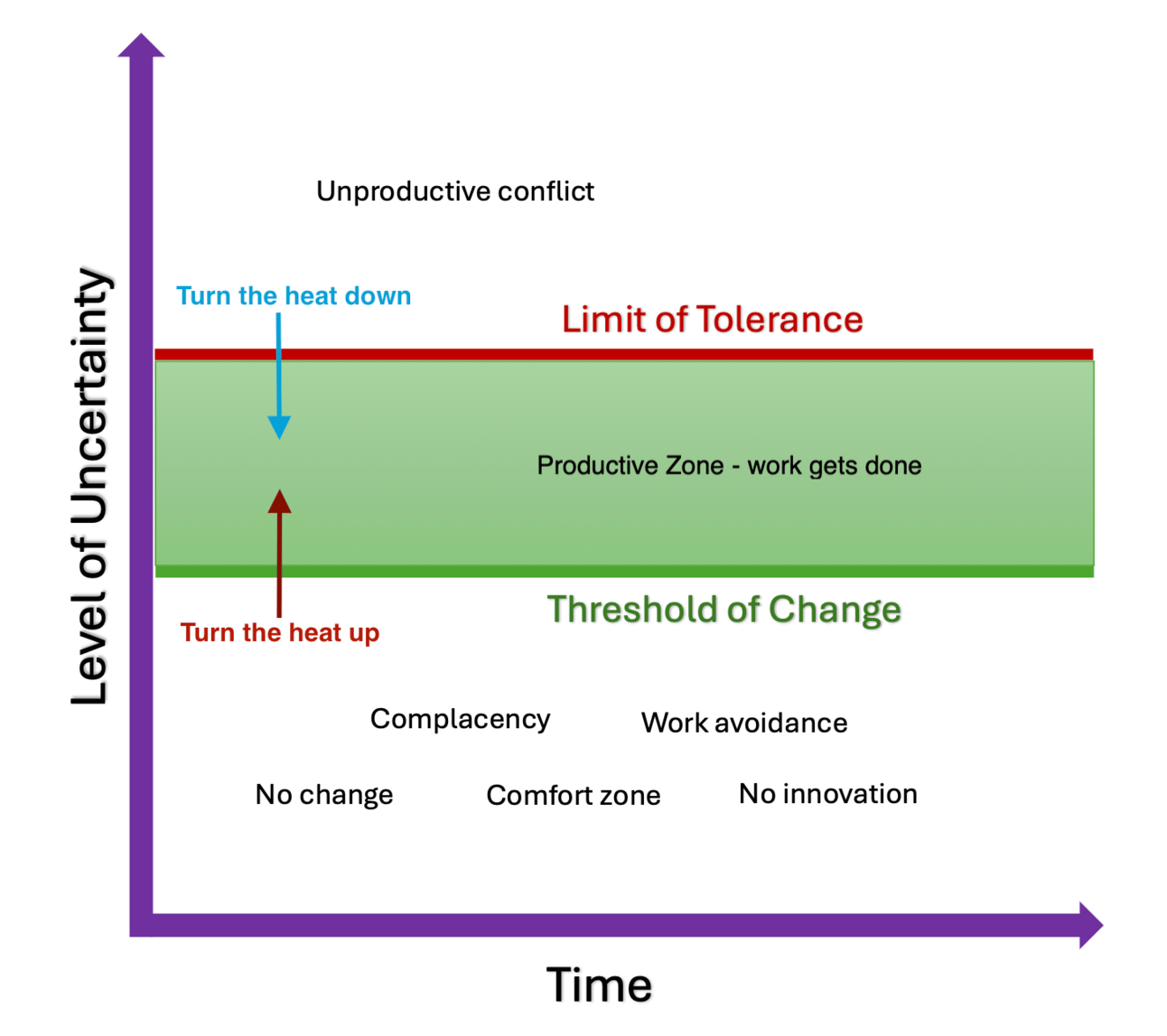👋 Hello, Changemakers!
Ever pitched a brilliant idea—only to meet polite nods and quiet foot-dragging? That's not stubbornness; it's loss management. Research by Harvard Professor Ronald Heifetz shows people don't resist change—they resist the losses hidden inside change.
When we fail to manage those losses, we get sabotage. When we name and pace them, we get progress.
Today's playbook turns that insight into seven practical moves you can use even if you have zero formal authority.
But before we dive in, we have some exciting news 👇
🚀 Coming Soon - Unlocked: How to Lead When You're Not in Charge
A self-paced online course to teach you how to:
✓ Build influence to lead without the title
✓ Become a better problem-solver
✓ Navigate office politics and win
Special Feature: your personal AI coach
50% Special Offer for Pulse of Change readers only: $150 $75 (first 20 people only)
The course will launch on July 21st - secure the best price now! 👇
🛠️ The 7-Step Loss-Management Playbook
Step 1: Surface the Losses Early
The Move: Before proposing solutions, map the territories people might lose.
Ask teammates: "What might you have to give up if we adopt this?" Then list fears—lost control/power, obsolete skills, disrupted relationships—where everyone can see them.
Pro Tip: Use Kegan & Lahey's "Immunity-to-Change" map to capture hidden "competing commitments" that keep the status quo alive. HERE is a step-by-step guide to this powerful tool.
Step 2: Regulate the Heat (Pace the Work)
The Move: Heifetz calls it "disappointing people at a rate they can absorb"
Break change into phased pilots or opt-in trials. Your goal: keep anxiety in the productive zone—enough pressure to motivate action, not so much that it triggers panic.
Watch your "thermostat": When debate dies, turn the heat up (share data, set deadlines). When panic spikes, cool things down (tell stories, schedule one-on-ones to build trust).
Remember: No pressure = no change. Too much pressure = resistance and conflict.

Step 3: Find Your Champions & Give the Work Back
The Move: You can't lead change alone—find people others trust and have high informal authority, and share work.
Involve those who have “skin in the game” - those who will potentially suffer the losses.
Create space for co-creation. No matter how brilliant your idea, if you get people to co-create from the beginning (especially trusted voices), you dramatically increase success odds.
Shift real design choices to those who live with consequences —rotating facilitation, co-writing new processes. When people author the solution, they own both the loss and the gain.
Step 4: Honor the Past & Connect to Values
The Move: People will "sustain losses and reconstruct loyalties" if they see the bigger purpose.
Before moving forward, create rituals that acknowledge what's ending. Hold a "mini-museum" of the outgoing process—photos, stories, shout-outs. This legitimizes grief and frees energy for the new.
Connect the change to shared values: "We're doing this because we all believe in..."
Step 5: Surface Conflicts, Protect Voices from Below
The Move: Managing loss means surfacing tough value clashes and ensuring less-powerful voices are heard.
When you notice resistance, give it space to surface sooner rather than later. Start in smaller settings (maybe 1-on-1), but often it needs to happen in larger meetings where Step 2 (regulating heat) becomes crucial.
Ensure losses aren't dumped on the powerless—distribute them fairly across the system.
Step 6: Run Safe-to-Fail Experiments
The Move: Design small, reversible tests that demonstrate if your idea works (or doesn't) without risking the entire project or organization.
What makes an experiment "safe-to-fail":
Limited scope: One team, one process, one metric
Short timeframe: 1-4 weeks maximum
Reversible: Easy to return to the old way if needed
Clear exit criteria: "We'll stop if X happens" decided upfront
Position experiments as "learning investments," not "proof you're right." When an experiment fails, celebrate the cheap learning. When it succeeds, resist the urge to immediately scale—run a second, slightly bigger test first.
Step 7: Care for the Self Who Leads
The Move: Practice mental hygiene to avoid burnout
Leading change is exhausting and can trigger your own loss and anxieties.
Anchor yourself by managing your hungers for control, affirmation, and closeness. Otherwise, personal loss triggers will derail you.
Essential support system:
A confidant: Someone completely outside your team/system to process with
A mentor: Someone outside the system with 15-20 years more experience
Mental hygiene habits: Daily practices to manage energy and mental health. HERE is a practical guide.
🎯 Example
For a better understanding of this 7-step guide, read THIS example that walks you through what an application could look like for one concrete challenge.
⚡ 5-Minute Action Step (Do This Right Now)
The Loss Mapping Exercise: Think of one change you want to see in your workplace. Grab a piece of paper and draw three columns:
Column 1: Who would be affected by this change?
Column 2: What might each person/group lose if the change happened?
Column 3: What do they currently value about the way things work now?
Fill this out for 5 minutes. Don't think about solutions yet—just understand the human landscape. This simple exercise will completely shift how you approach the change and dramatically increase your odds of success.
If you want to explore more action items, click HERE
➕Additional Resources
Here are a few articles, podcasts, and a book to explore how to lead change further:
Remember - change isn't about having all the answers—it's about asking better questions. You already have everything you need to start leading. 👊
PS: To learn more about leading change, check out our new course pre-sale special offer only for our subscribers: UNLEASHED